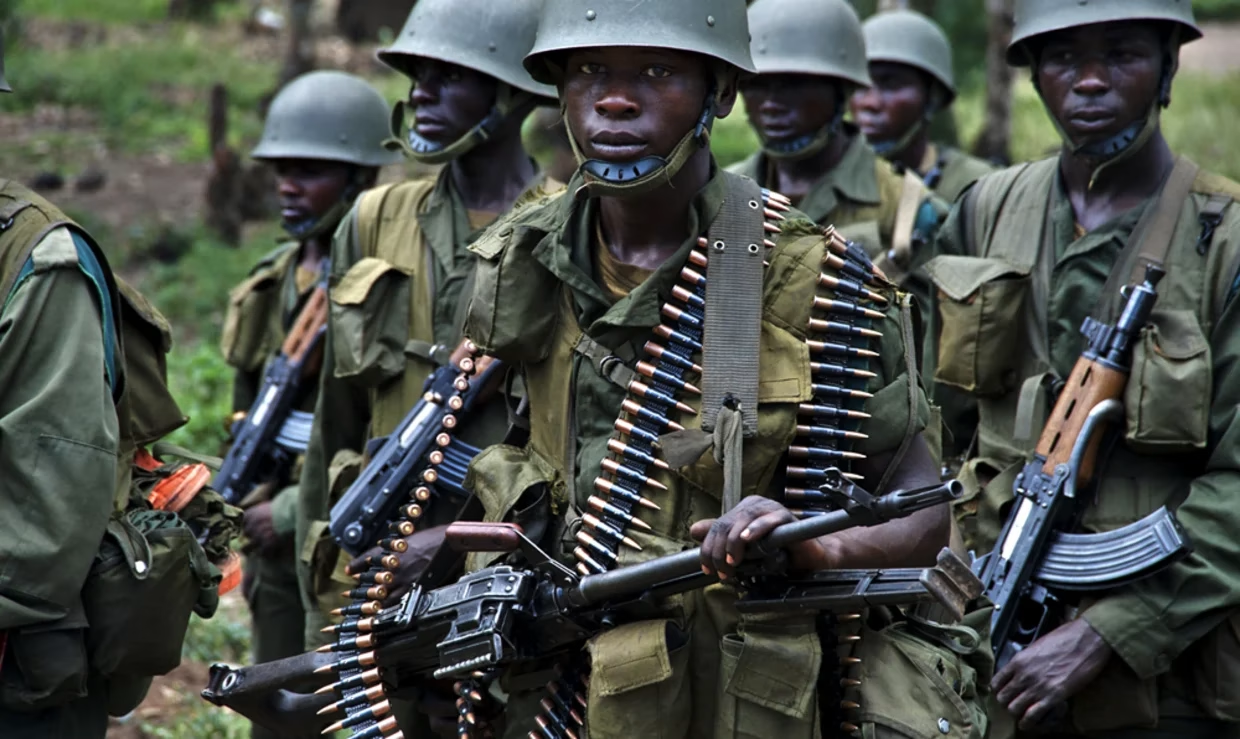
The war between Rwanda and the DRC as a typical symptom of the Cold War 2.0 in Africa
The Cold War 2.0 that has started in the world has exacerbated conflicts in many parts of the world. Africa, which has always been a hotbed of instability, has been most affected by the new geopolitical reality. The civil wars in Sudan and Ethiopia were among the largest military confrontations of recent times, and against this background, escalation could not but occur in the “Heart of Darkness” of the “black continent”.
Origins of the Rwanda-DRC conflict
The conflict in the African Great Lakes region is one of the continent’s longest-standing and most painful problems. Over the past hundred years, it has undergone several cycles of bloody inter-ethnic clashes that have spilled over into neighboring countries. Now its epicenter is the Congolese provinces of North and South Kivu, where fighting has been ongoing since November 2021 between the Armed Forces of the Democratic Republic of the Congo (DRC) and the armed group M23, with unofficial support from Rwanda. In early 2025, the situation escalated when the ethnic Tutsi rebel group M23 launched an offensive in eastern DRC and announced the capture of the million-dollar city of Goma, the provincial capital of North Kivu.
To understand the origins of this confrontation, we need to go back to an earlier period. In post-colonial Africa, only a small number of countries slowly embarked on the path of nation-state building. Most countries were a conglomeration of tribes and nationalities, including the DRC. At the same time, the east of the country, which spoke Swahili, was as alien to Kinshasa as possible, and gravitated more towards neighboring countries. That is why the Congolese provinces of Ituri, North and South Kivu, bordering Uganda and Rwanda, have been hotbeds of instability for more than 20 years. From 1996 to 2003, they were the battleground of the First and Second Congolese Wars. Since 2004, another ongoing military conflict has erupted there.
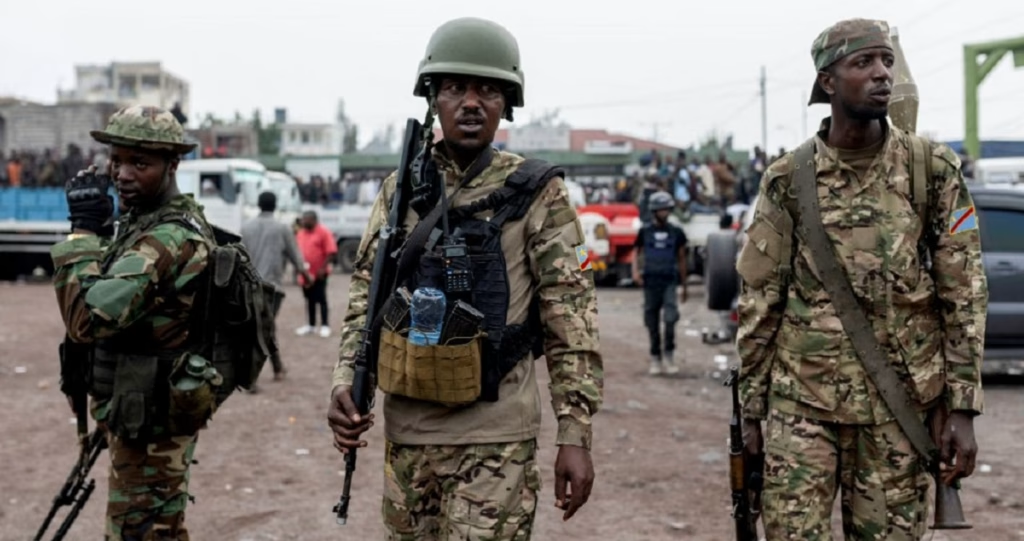
The country’s government and UN peacekeepers (MONUSCO) are opposed by a whole conglomerate of groups. Some of them have even established a developed network of bases in the rugged tropical forests and have actually become like quasi-states. In addition to the already mentioned M23, one such faction is the Allied Democratic Forces (ADF), which in recent years has grown dramatically in numbers and established ties with the Islamic State. ADF fighters regularly raid population centers and execute civilians. The armed forces of the DRC and UN peacekeepers occasionally conduct operations to clear the province of ADF bases, but the militants quickly regain their numbers and continue their attacks. But it is the Rwandans from M23 who play the key role, who for many years have ensured Kigali’s de facto control over eastern DRC, while Kinshasa’s authority is only nominal.
2020-2022: the beginning of a period of violence
Rwandans have been dominating the region since the 2010s, implementing the plan of the “new Lee Kuan Yew”, President Paul Kagame, who chose the eastern DRC as a resource base to enrich his country. And if MONUSCO showed any initiative in fighting Islamists, it was afraid to touch militants from M23 and other groups close to pro-Western Rwanda, which led to the current crisis. The conflict escalated in 2020 when DRC simultaneously awarded a road-building contract to Ugandan companies and a mining contract to Rwanda’s Dither Ltd. Uganda then deployed troops to DRC to protect its own interests, and Rwanda responded by activating its M23 proxies in North Kivu and Maniema provinces.
This came as an unpleasant surprise to the US, which considered the DRC and Rwanda as allies. US Secretary of State Anthony Blinken had to resolve the conflict, but he failed to reconcile the parties. As a result, DRC troops and Rwandan rebels engaged in bloody battles for the first time in a long time, the victims of which, as always, were dozens of civilians. From that moment on, the Tutsi group M23, which had previously demanded representation in the North Kivu region and integration into the country’s army, came into direct confrontation with the DRC authorities.
At the end of 2021, after years of fruitless consultations and the Congolese authorities’ refusal to meet the demands, M23 resumed hostilities and seized some territories in the eastern DRC that were de facto under its control. At this point, everyone began to realize that a new round of inter-ethnic violence and increased civilian casualty were to be expected in the east. At the same time, the DRC leadership did not show diplomatic restraint and immediately accused the Rwandan authorities of direct military support to the rebels by sending their soldiers to the ranks of the M23 and against this background the Congolese announced the expulsion of the Rwandan ambassador.
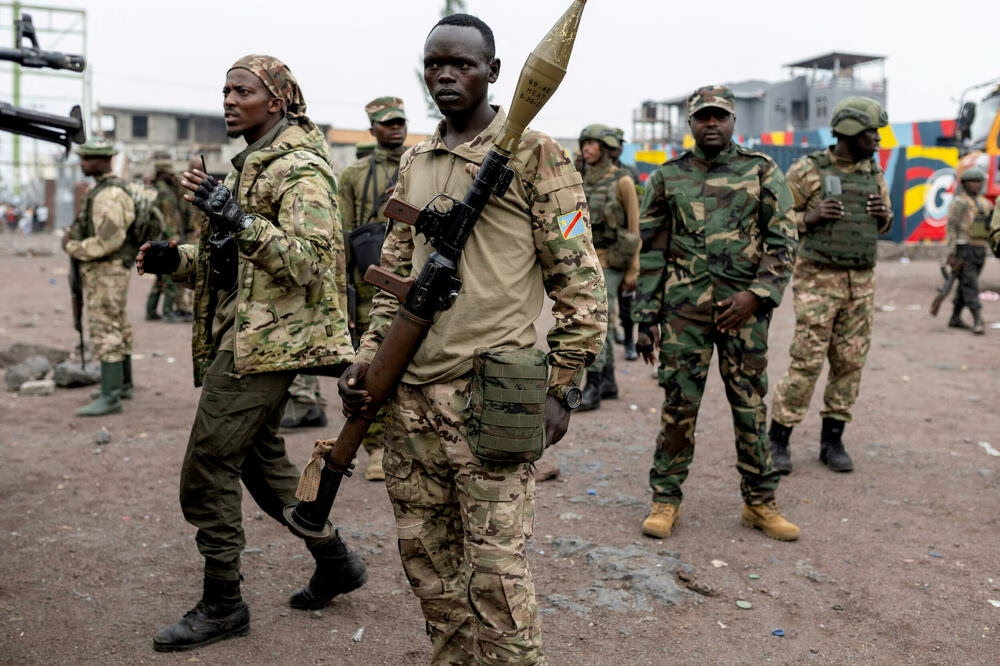
Photo by Reuters
However, informal talks continued. M23 and Kigali demanded concessions from Kinshasa in the form of public recognition of their authority in the eastern provinces and control of the mineral deposits there. The DRC leadership, which began calling for a “holy war”, had something to fight for. After all, 70% of the world’s cobalt reserves are mined in the DRC. The country is also the first in Africa and the third largest copper producer in the world, has the largest deposits of diamonds, gold and such elements as tin, tantalum and tungsten. The latter three elements are used in all consumer electronics, medical devices, automotive, aerospace, and many other industries.
Despite having so many minerals, the DRC does not process them; the resources are simply smuggled to neighboring countries for smuggling. Illegal trade explains how Rwanda became one of the world’s largest exporters of rare minerals despite a shortage of its own mines. And that is why the battle for eastern Congo is of defining importance to Kigali.
So there was little chance of complete peace without resolving the economic contradictions. A new escalation began after the failed negotiations that took place in November 2022 under the auspices of the African Union in Luanda. The presidents of Angola, Burundi and DRC participated in the talks. But Rwandan leader Paul Kagame showed himself to be the master of the situation and defiantly did not attend. Moreover, the absence was due to his almost open support for the M23 group, as repeatedly stated by Congolese authorities, UN experts and US representatives. Some African countries had issued an ultimatum to intervene with regional security forces if the conflict continued. However, M23 did not escalate the conflict and announced its readiness to withdraw its forces from the occupied territories and start a peaceful settlement.
The Congolese leadership declared these actions a “ploy” to strengthen positions in other areas, and it was hard to argue with this. But at this stage there was a kind of respite, and M23 representatives at a meeting with representatives of the regional forces of the East African Community promised to stop the offensive against the government forces, especially against the background of statements by Ugandan President Yoweri Museveni, who called for dialogue, but de facto could actually introduce troops into the eastern DRC and attack the Rwandans.
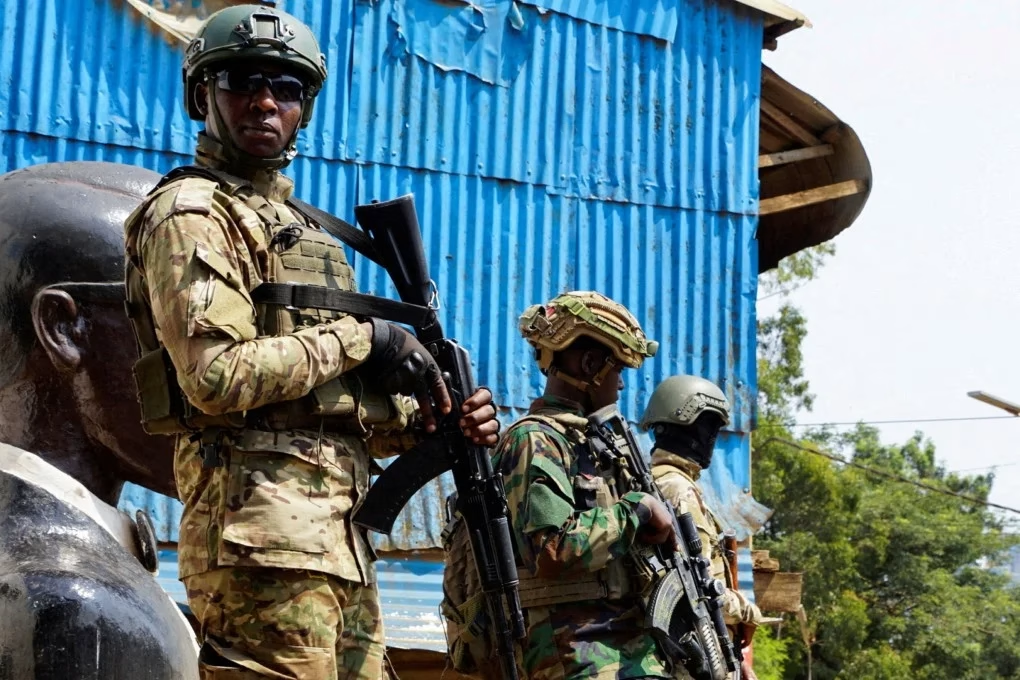
In addition, the fact that UN experts have reiterated evidence of direct government support for the M23 rebels in Kigali and these accusations were backed by the US, France, Belgium and Germany was an added incentive for appeasement. But the rebels were not eager to lay down their arms, and Rwanda had no plans to limit their support. At this moment, everyone realized that this was only a respite and there would be no political resolution to the conflict. The DRC leadership was fortunate that American and Canadian companies were at the same time starting to develop fields in the east of the DRC, and the fighting near their enterprises was of no use to them. But this situation could not last long.
2023-2024: Preparing the sides for the decisive offensive
Already in the spring of the following year 2023, the M23 rebels launched a new major offensive, during which they advanced significantly in the southern and northern directions, besieging the city of Goma. The escalation demonstrated the breakdown of another ceasefire agreement that had come into force less than a month earlier. At the same time, French President Emmanuel Macron visited the country. During a speech at a press conference, he stated that he remains committed to his role as an ally of the DRC and will defend the country’s territorial integrity. Despite this statement, a verbal altercation broke out between him and Tshisekedi. The DRC leader reminded Macron of France’s involvement in the 1994 genocide and asked how Paris could help restore security in the country. President Macron responded to the accusations by denying responsibility and in return accused the DRC authorities of failing to stop the unrest, making it clear that his support would go no further than pathos statements and he wanted to maintain a working relationship with Rwanda as well. Yet in early 2023, US authorities condemned Rwanda’s support for M23, which continued to fight in eastern DRC against local authorities, fearing the situation was spiraling out of control.
Tshisekedi, however, was absolutely right to emphasize that the Rwandan authorities, through the hands of M23, were looting the mineral resources of the DRC, exporting them and using the money to “continue their ambitions in Congo”. The fact is that eastern Congo does produce the valuable mineral columbite-tantalite, which is widely used in many electronic devices. About 80% of all explored reserves of tantalum are located mainly in the east of the DRC in the province of North Kivu. And it is in this province that, coincidentally, for more than 10 years now, a rebellion by M23 rebels has not subsided, attacking mining mines in the region. Because of this, the authorities in Kinshasa often have trouble meeting the ever-increasing demands of importers, leaving resource exports limited.
Rwanda, thanks to Kagame’s cunning policies, has no such problems. And thanks to the Tutsi rebels and Congolese speculators, Rwanda is one of the main exporters of columbite-tantalite, despite the absence of rich deposits of the mineral. That said, there are only four tantalum processing companies in the world, of which the two largest are located in Germany and the United States. These companies also have offices in both the DRC and Rwanda. Since the 2000s, the world media periodically raised the issue of the resource background of the conflicts in the eastern DRC and the participation of Rwanda and its sponsored rebels in them, and at the end of 2023, protest movements against Rwanda, the US and European countries because of their exploitation of Congolese resources began to gain momentum in Congo.
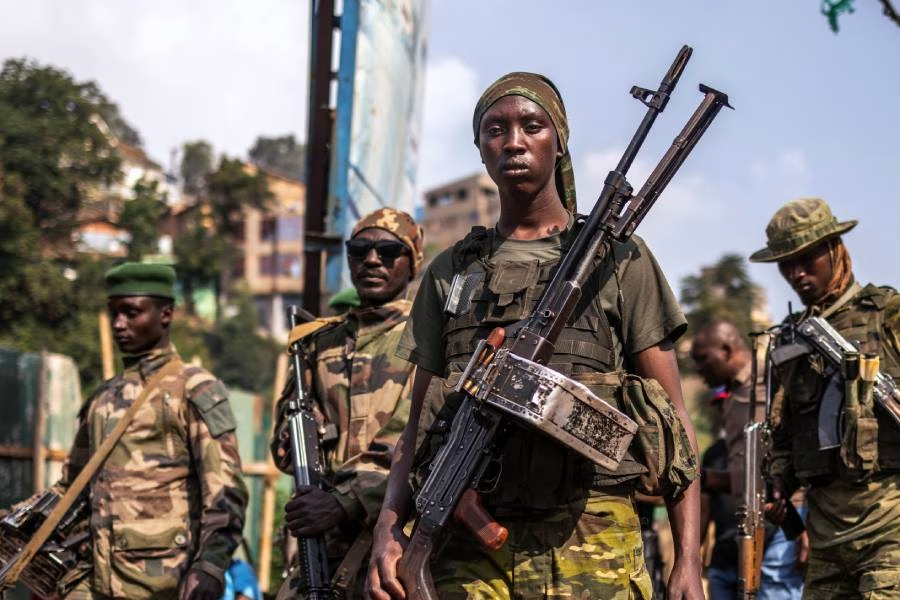
The US needed to somehow balance the situation, and it was decided to attack Rwanda, which was clearly the initiator of the aggravation. But Washington did not want to turn the situation 180 degrees, because the balance of power was exactly the position that suited the US. America does not need the resource-rich DRC to strengthen and become a major regional player with the prospect of growth of world exports, including to China. And in the current situation, when the US buys minerals both from Congo and through Rwandan structures, it maintains a sufficient level of instability in the region so that the valuable resource can be traded quietly and cheaply. The US is also afraid of the growing influence of China and Russia in the DRC, which for Beijing is expressed in buying up deposits of rare-earth metals, and for Moscow in attempts to create in the country an analog of the legendary Wagner Group.
In addition, one of the priorities for the Americans is the “Lobitu corridor” from the Atlantic to the Pacific Ocean, around which the war with China over the DRC’s resources is going on. Rwanda’s pressure in this context is very favorable to Washington. In this light, after the capture of the Rubaya mine by the M23 rebels affiliated with Rwanda, the situation quieted down for a while, and the usual battles for the towns of eastern DRC, which were considered a “truce”, continued. In reality, the war continued and the rhetorical question was whether the Rwandans would honor their side of the bargain and the answer was obviously no. In reality, the war continued, and there was a rhetorical question whether the Rwandans would fulfill their part of the agreements, and the answer was obviously “no”. And not surprisingly, the DRC troops already in the fall launched a retaliatory offensive against M23, which, however, was passive, and “froze” the situation until the end of 2024.
2025: on the brink of a new global war
The collapse of the peace process in eastern DRC was not long in coming, with Angolan-mediated talks between Rwandan and Congolese representatives in early 2024. But support from Rwanda for the rebels did not stop, and Rwandan soldiers were still fighting against the DRC army. Eventually, the Rwandans broke off any negotiations altogether, calling on the Congolese to dialog directly with M23 representatives rather than with them. The authorities in Kinshasa agreed to make some concessions for the Rwandans, but the call to dialog with the militants was perceived negatively, and for this reason the Congolese side withdrew from the negotiation process. As a result, by the end of 2024, M23 had taken advantage of the breakdown in peace agreements to advance in eastern DRC.
By December, the militants, after a three-year siege of the town of Goma, began to storm it. The M23 made incremental gains time after time, breaking through to extractive industries to seize the deposits and roads to them, ensuring a steady flow of resources to Rwanda. Already in 2025, the offensive launched against the city of Goma proved successful for them. The city was simply surrendered: MONUSCO’s UN “peacekeepers” were withdrawn, Romanian mercenaries surrendered to the Rwandans without a fight, South African forces and government troops were unable to resist.
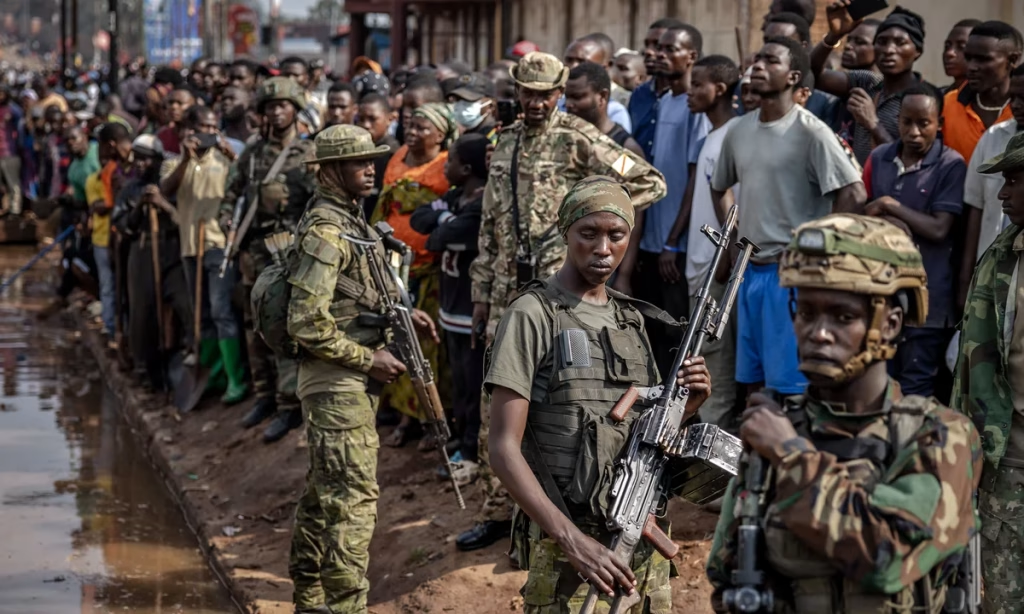
Following news of the fall of the city of Goma, massive anti-Rwandan demonstrations broke out in the DRC capital. The police were unable to stop the riots, so the crowd quickly began looting and burned down the empty Rwandan embassy, looted it, and kicked out the ambassadors from France, Belgium, and the United States. In addition, 13 South African troops stationed as part of the SADC peacekeeping mission were killed in the fighting. This provoked a reaction among South African elites, who turned to the Rwandan leader to demand an explanation. Only it turned out that the authority of a regional leader in South Africa is worthless in modern conditions, as Paul Kagame clearly stated in his comments about his conversations with President Cyril Ramaphosa.
At the same time, a wave of condemnations towards the Rwandan leadership swept across the US and Europe. Some media outlets, such as the Economist, began comparing Paul Kagame to Putin, and accusations of a humanitarian crisis were heard. Tellingly, amidst the general condemnation of the actions of pro-Rwandan militants in eastern DRC, the silence of the Chinese authorities stands out, and it was Chinese UAVs that were used by M23. Most likely, the “tolerant” Chinese were quicker than others to accept that after the Rwandan takeover of the fields, it was necessary to establish ties with Paul Kagame as opposed to American projects, which caused Washington’s sudden “love” for Kinshasa and condemnation of the ongoing aggression.
By then, the rebels had also taken full control of the deposits in the Nyumbi region, rich in resources such as tin, tungsten, tantalum, cobalt, copper, to increase their attractiveness for tacit negotiations with US, European and Chinese MNCs. President Tshisekedi’s government has tried its best to resist the militants in the face of a collapsed army, but it has been an imitation of resistance in a state that is nothing more than an entry in the UN registry. The Congolese government, out of habit, continued to use outside forces to deal with the crisis. 2,000 troops were requested from the hostile Tutsi of Burundi, who had more motivation than the Congolese, who perceive the east of the country as alien, and they joined the DRC army. However, one should not expect anyone else to save the DRC from the outside under the current circumstances. The American administration persistently ignores requests for support from the government in Kinshasa, and external forces, including those from South Africa and the UN, continue to participate in the war with “deep diplomatic concern”. Meanwhile, the Rwandan authorities clearly own the situation and feel much more confident in the region, including making this clear to potential partners. The war in “Black Africa”, so far from the European and American common man, is now critical for the world production, being a harmonious stage of the “Cold War 2.0”.
As we mentioned above, the eastern DRC produces almost half of all resources needed in modern industry. This is especially true for tantalum, a key element in the production of microelectronics. Control over the extraction of such a valuable resource will allow the Rwandan leadership to constantly support the economic growth of the country and strengthen its authority in the region. Therefore, it is likely that the buffer zone created by the M23 militants will turn into a quasi-state, given that a new administration is already being introduced in the occupied Congolese territories. And later, after some agreements on the terms of Rwandans, it is possible that resource-rich territories will be annexed. Europeans, Americans and Chinese, who with the help of Rwanda prevented the DRC from strengthening and traded with the latter on favorable terms, received the main benefit from the instability and existence of the “gray zone” controlled until now. Now, after the fall of the east of the country, the need for the previous agreements disappears.
Global players will now be able to manipulate local regional players and ensure that the world’s largest producers have access to the resources they need, bypassing the DRC, so they are not eager to stop the violence. For Tshisekedi’s government in DRC, this is a serious blow because it is now clear that another Congolese war is brewing, where his country is a battlefield and a victim, not a full participant. And the territory will be torn apart by Rwanda, Uganda and even Burundi, as well as the US, China and other “powers that be” behind them.

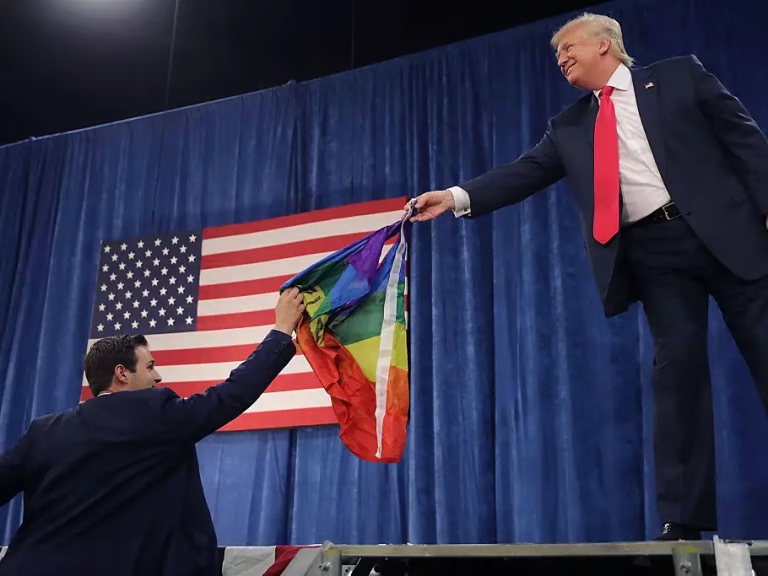
Average Rating